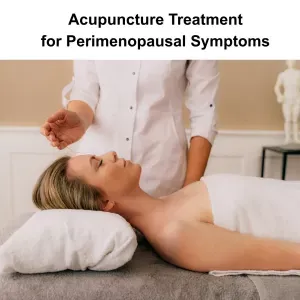by Qineng Tan, L.Ac., Ph.D. and Xiaomei Cai, L.Ac., Ph.D.

Strong, fiery energy is on the horizon, as the Horse Year gallops in this coming February 2026.
Chinese New Year begins on February 17, 2026, and we say goodbye to last year’s Wood Snake. The Year of the Fire Horse may bring a driving force and a sense of propulsion to your projects and dreams.
In Chinese astrology, the Horse symbolizes vitality, independence, and the pursuit of freedom. When combined with the Fire element, the Horse brings intense, passionate energy. The Fire Horse inspires bold action, confidence, and creativity, but also calls for balance and mindfulness to keep from burning out.
To find your sign in Chinese Astrology, check out our previous article about Chinese New Year and the Eastern Zodiac signs here.
Chinese Astrology and the Fire Horse
In the Chinese Zodiac, each year is associated with one of twelve animals and one of five elements (Wood, Fire, Earth, Metal, or Water). Together, they make a complete cycle every 60 years.
The Horse is naturally energetic and spirited, representing movement and strength. When paired with Fire, this energy becomes even more powerful, dynamic, and driven.
The last Year of the Fire Horse occurred in 1966, which we may remember as a year of intensity and transformation.
The Fire Horse year can bring great potential for breakthroughs and creative expansion, but it may also stir restlessness and impatience. This is a time to move forward with confidence, but also with clarity and care.
The energy of this year is fast-moving and transformative. It’s a powerful time to launch new projects, travel, or make big life changes. However, the Horse can sometimes gallop too fast, so it’s important to stay grounded and avoid overexertion or impulsive decisions. Taking time to rest and reconnect to your inner rhythm will help you make the most of this year.
Personality Traits of the Fire Horse

People born in the Year of the Horse — 1930, 1942, 1954, 1966, 1978, 1990, 2002, 2014, and 2026 — are known for their independence, enthusiasm, and drive. Horses are natural leaders who thrive on challenge and movement.
If this is you, then 2026 is your “ben ming nian.” When it is “your year,” you are beginning a new cycle. The ben ming nian is a time to plant seeds to come to fruition in future years. It can be an exciting time, but it is also necessary to protect yourself, as sometimes problems can crop up.
During a Fire Horse year, fiery traits are amplified. You may feel a renewed sense of purpose, courage, and inspiration.
Horses have strong life force energy and attract others with their warmth and vitality. They crave freedom and prefer to chart their own course. Horses are decisive, but may need to slow down and think before leaping. Fire Horse people are deeply emotional and can inspire others, but must manage stress and emotional intensity carefully.
Top 5 Health and Wellness Tips for Horse People
In Traditional Chinese Medicine, the Horse is connected with the Fire element and the Heart and Small Intestine meridians, which govern circulation, vitality, and emotional balance. The Fire Horse’s strong energy can sometimes lead to overwork, burnout, or stress-related health issues if not moderated.
To stay well during this fiery year, Horse-born individuals should focus on maintaining internal harmony and nurturing calm:
- Protect the Heart: Avoid excessive stress, caffeine, or late nights. Acupuncture can help regulate the Heart Qi and Shen (spirit), easing anxiety, palpitations, or restlessness.
- Support the Nervous System: Horses are sensitive to emotional ups and downs. Practices like Tai Chi, meditation, or Qi Gong can help smooth the flow of Qi and calm the mind.
- Watch Digestive Health: The Small Intestine meridian connects with gut function. Avoid overeating spicy or greasy foods and favor warm, nourishing meals.
- Stay Hydrated and Grounded: Balance Fire energy with cooling foods like cucumber, pears, watermelon, and green tea.
- Get Regular Rest: Sleep restores Yin energy and helps the body recover from the Horse’s natural drive and activity.
This is a wonderful year to renew your vitality and channel your passion — but remember that steady pacing will carry you farther than pure speed.
Lucky Colors and Symbols for Chinese New Year 2026
To harmonize with the Fire Horse’s energy, use colors and symbols that reflect vitality and success. Lucky colors include red, orange, and gold, representing Fire, joy, and prosperity. Add touches of green for balance and growth.
Displaying jade or citrine stones can attract abundance and protection. Plants like bamboo, citrus trees, and lucky palms bring refreshing Wood energy to balance Fire’s intensity.
For more general Feng Shui tips for the New Year, read our previous article here.
Chinese New Year Traditions for 2026

As always, preparation for the Lunar New Year is about clearing away the old and inviting in the new. In China, families will travel long distances to reunite and celebrate with loved ones.
Before the New Year, homes are cleaned from top to bottom to sweep out stagnant Qi and make space for prosperity. Decorations in red and gold fill homes and streets. Red envelopes filled with money are given to children as blessings for the year ahead.
Foods that symbolize wealth and longevity, like dumplings, spring rolls, long noodles, and tangerines, are enjoyed to usher in good fortune and abundance.
Feng Shui Tips for the Year of the Fire Horse
A few thoughtful touches around your home can help keep good energy moving smoothly.
- Activate Fire energy in the south area of your home with red candles, lamps, or artwork.
- Add Water elements (such as a small fountain or a bowl with floating flowers) to balance the intensity of Fire.
- Keep clutter minimal to allow Qi to move freely — especially near doors and pathways, symbolic of the Horse’s freedom of motion.
- Incorporate living plants with upright growth to attract prosperity and balance the dynamic Fire Horse energy.
Acupuncture and TCM for the Fire Horse Year
In Traditional Chinese Medicine, the Fire element governs both joy and agitation. When balanced, Fire brings warmth, passion, and enthusiasm for life. When excessive, it can manifest as insomnia, irritability, anxiety, or heart palpitations.
Acupuncture can help balance the Heart Fire, calm the spirit, and support overall energy flow. Herbal medicine may be prescribed to nourish Yin, clear Heat, or tonify Qi, depending on each person’s constitution. By maintaining equilibrium, we can enjoy the vitality of this year while keeping our health and emotions steady.
A New Year Message from Art of Wellness
As we gallop into the Year of the Fire Horse, may you find the courage to pursue your dreams and the wisdom to pause and breathe along the way.
From all of us at Art of Wellness Acupuncture, we wish you abundance, joy, and radiant health in the year ahead.
“马到成功!” May success come swiftly, like a galloping horse!
*This article is for education from the perspective of Traditional Chinese Medicine only. The education provided by this article is not approved by FDA to diagnose, prevent, treat and cure human diseases. It should not stop you from consulting with your physician for your medical conditions. Traditional Chinese Medicine is based on Qi, which is an invisible force that usually cannot be observed by modern science. Because science focuses on testing ideas about the natural world with evidence obtained through observation, these aspects of acupuncture can’t be studied by science. Therefore acupuncture and Chinese herbs are often not supported by double-blind, randomized trials, and they are considered alternative medicine therapies in the United States.












